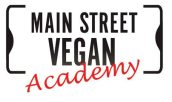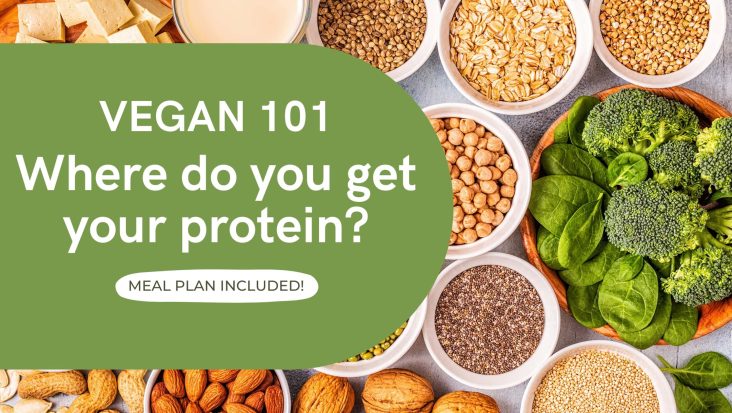posted June 13, 2023
“Where do you get your protein?” If you’re Vegan, you’ve probably heard this question a million times—it’s like the ultimate Vegan pop quiz. There’s a misconception that plant-based diets lack this essential nutrient. Despite numerous examples of thriving Vegan athletes and a wealth of scientific evidence supporting plant-based diets, the protein concern persists.
5 Incredible Sources of Vegan Protein
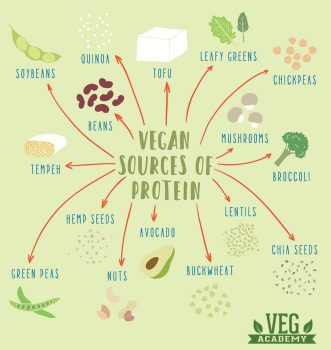
Let’s shatter the protein misconception and explore five incredible sources of Vegan protein. Plus, get a protein-packed 3-day meal plan to start fueling your body with plants!
1. Beans & Legumes: Protein Powerhouses
Lentils, chickpeas, black beans, and other legumes might not wear capes, but they are the true heroes of the Vegan protein realm. One cup of cooked lentils contains approximately 18 grams of protein! These versatile little wonders can star in everything from soups and curries to salads and burgers.
2. Whole Grains: Carbs with a Protein Surprise
Who said carbs can’t bring protein to the party? Say hello to whole grains that prove everyone wrong. Quinoa, brown rice, and oats are not only loaded with “good” carbs, they’re also surprising sources of protein. Quinoa contains all nine essential amino acids and just 1 cup provides 8 grams of protein!
Whole grains transform breakfast bowls, salads, and comforting dishes into protein-packed feasts.
3. Get Nutty: Nuts and Seeds
It may sound nutty, but although small, nuts and seeds possess an extraordinary power—the power of protein! Almonds, cashews, walnuts, pumpkin seeds, and hemp seeds are just a few examples that bring generous amounts of protein to the table. A handful of almonds provides about 6 grams of protein, while two tablespoons of hemp seeds pack around 10 grams. Snack on mixed nuts, sprinkle seeds over your salads or smoothies, and get creative with homemade nut butters. Nuts and seeds are also great bases for creamy soups and desserts!
4. Vegetables: Protein Hiding in Plain Sight
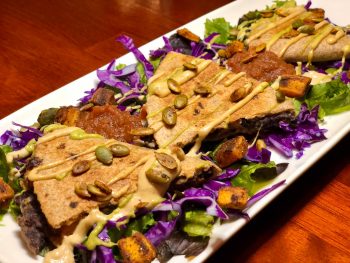
Vegetables are the sneaky ninjas of the protein world. They don’t boast about their protein content, but it’s definitely there, silently supporting your plant-powered lifestyle. Spinach, broccoli, cauliflower, greens, and other veggies are packed with essential nutrients and a surprising amount of protein. One cup of cooked spinach contains 5.3 grams of protein.
Add a handful of spinach to your morning smoothie, roast broccoli for a flavorful side dish, or create a delicious stew loaded with veggies!
5. Supercharge with Plant-Based Protein Powders
For those seeking an extra protein boost, plant-based protein powders are a convenient solution. Protein powders, made from peas, brown rice, or hemp provide a concentrated dose of protein without the cholesterol and saturated fat found in animal-based alternatives. Mix them into smoothies, baked treats, or pancakes.
3-Day Vegan Protein-Powered Meal Plan
Now that we’ve answered the question about Vegan protein, it’s time to embrace the power of plants! Here’s a 3-day meal plan to help get you started. Customize portion sizes according to your individual needs.
Day 1:
Breakfast:
Protein-packed smoothie made with almond milk, a scoop of plant-based protein powder, a handful of spinach or kale, a tablespoon of almond butter, and a sprinkle of hemp seeds.
Lunch:
BBQ Tofu Buddha Bowl with quinoa, greens, veggies, and whole grains topped with a Cashew Ginger Dressing.
Snack:
Handful of Crispy Roasted Chickpeas.
Dinner:
Lentil curry over quinoa or brown rice. Loaded with veggies like cauliflower, carrots, red bell pepper, and peas.
Dessert:
Chocolate chia pudding made with chia seeds, cocoa powder, and almond milk. Top with sliced strawberries.
Day 2:
Breakfast:
Tofu scramble with sauteed vegetables.
Lunch:
Black bean and sweet potato quesadilla topped with pumpkin seeds and a cashew-based Chipotle Cheese Sauce.
Snack:
Handful of mixed nuts for a protein-rich midday snack.
Dinner:
Vegetable Barley Stew with onions, carrots, zucchini, cabbage, corn, potatoes, and barley.
Dessert:
Fruit salad topped with hemp seeds.
Day 3:
Breakfast:
Overnight oats with almond milk, maple syrup, and a variety of toppings such as berries, sliced banana, and a drizzle of almond butter.
Lunch:
Lentil Sloppy Joes topped with coleslaw.
Snack:
Carrots and cucumbers with Easy Creamy Hummus.
Dinner:
Vegan chili with kidney beans, diced tomatoes, veggies, and spices. Served over brown rice.
Dessert:
Apple slices with almond butter.
This Vegan meal plan will nourish your body with a variety of plant-based protein-rich meals throughout the day.
Need help creating a custom protein-rich Vegan meal plan? Reach out to Main Street Vegan Academy-certified Vegan Lifestyle Coach and Educator, Heather Dahman.
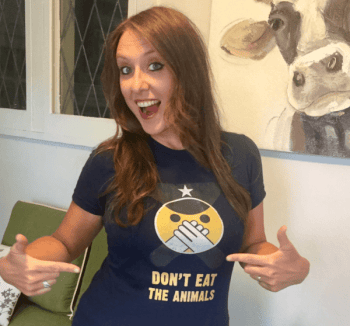
In marketing and web design for over 20 years, Heather Dahman owns, HD Vegan Marketing + Design, an agency focused on helping Vegan businesses succeed online. She is a Main Street Vegan Academy-certified Master Vegan Lifestyle Coach and Educator with her company, The Veg Academy, and holds a certification in plant-based nutrition. Heather is currently working on her cookbook, organizes a local vegfest and Vegan restaurant week, and loves to travel with her husband and two huskies.
